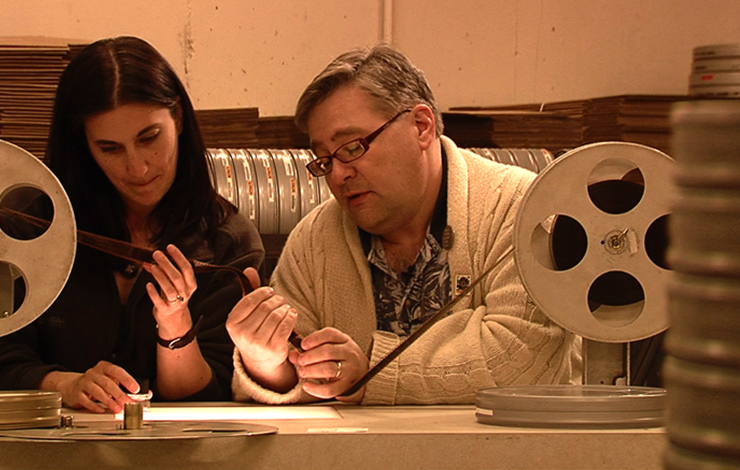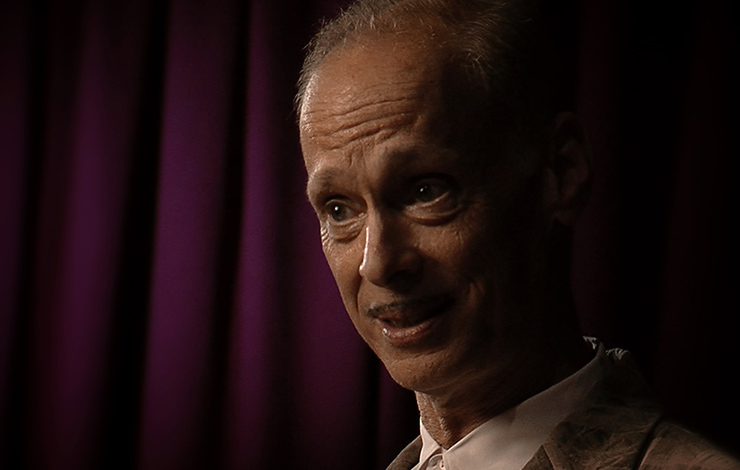
These Amazing Shadows is the story of the National Film Registry. The documentary is scheduled to air on PBS December 29 as part of the Independent Lens series. PBS is also distributing the documentary in DVD and Blu-ray formats.
The 88-minute film was conceived, written, produced and directed by Paul Mariano and Kurt Norton for their company, Gravitas Docufilms. Christine O'Malley, whose work with Patrick Creadon includes Wordplay and I.O.U.S.A., also produced the film.
The National Film Registry is part of the Library of Congress. It was founded in 1989 under the auspices of the National Film Preservation Act passed by Congress the previous year. The mission delegated to the Registry is to restore and archive 25 motion pictures per year that have fit the criteria of "culturally, historically or aesthetically significant." Films are chosen based on recommendations made by fiction and documentary filmmakers, critics and fans.
Films must be at least 10 years old to be eligible. Content varies from a 1893 black-and-white film of a blacksmith at work to Thriller, the long-form Michael Jackson music video by John Landis; classics such as The Godfather and The Wizard of Oz; the amateur Zapruder film documenting the assassination of President John F. Kennedy; and a treasure trove of documentaries, including Hoop Dreams, Harlan County USA and Salesman.
These Amazing Shadows integrates images culled from films in the Registry with observations made by 65 individuals, including Barbara Kopple, Steve James, Rob Reiner, Gale Anne Hurd, Christopher Nolan, Leonard Maltin, Debbie Reynolds and Dr. James Billington, who heads the Library of Congress.
The story behind the production of These Amazing Shadows is like the script for a feel-good Hollywood movie, where a seemingly impossible dream comes true. Paul Mariano was a criminal defense attorney, who served in a Northern California public defenders office for 27 years. Kurt Norton was a private investigator, who specialized in death penalty cases, frequently in collaboration with Mariano.
After Mariano retired from law, he and Norton formed Gravitas Docufilms and initially produced "mitigation videos" for defendants in death penalty cases. They later collaborated on Also Ran, a 2006 behind-the-scenes documentary about the special election that resulted in recalling California Governor Gray Davis from office in the wake of the state's energy crisis.
Documentary spoke with Mariano about the process of making These Amazing Shadows.
What inspired you and Kurt to undertake this ambitious endeavor?
Paul Mariano: In 2007, we read an article about the National Film Registry and the films selected that year. That sparked our interest. We were both stunned by the statistics about films which were part of our culture that have been lost forever. Approximately half of the films made in the United States prior to 1950 no longer exist. As many as 80 to 90 percent of all American silent films have been lost forever. Those losses seemed unimaginable to both of us.
How did you get this project into motion?
We contacted Steve Leggett, who is the coordinator for the National Film Preservation Board at the Library of Congress. I explained that we wanted to come to Washington to discuss an idea we had for producing a documentary about the role the Registry plays in our culture. He was extremely positive from day one, and was incredibly helpful from the beginning through the completion of our production.
How did you begin production after that initial conversation?
We began by researching the origins and background of the National Film Registry and the National Film Preservation Board. We interviewed Steve and some archivists at the Packard campus in Washington, DC. That armed us with important insights about what they did, the passion they felt for their mission and why preserving yesterday's and today's films for tomorrow's audiences is important.

You were drawing on an amazing trove of potential content. What was the process for choosing the clips that you used?
The American film heritage is an incredibly rich and diverse landscape. We wanted to accurately represent the tremendous diversity of films archived by the Registry. They include avant-garde and classic Hollywood movies, documentaries, home movies and industrial films. We chose clips from films that reflect that diversity, while telling stories about our people and culture, for better or worse.
How did you and Kurt decide whom to interview?
That process began with Steve Leggett introducing us to John Ptak, Bob Rosen, Betsy McLane, Del Reisman and other members of the National Film Preservation Board. Some of those interviews led to introductions to actors, directors and other filmmakers, including Rob Reiner, John Singleton and Amy Heckerling. The interview process continued with Kurt and I persistently asking people who we felt could shed light on this important issue to share their thoughts and feelings.
Did you assemble people who are featured in your documentary in groups, or are these all individual interviews?
Kurt and I and our cameraman traveled to wherever they were. We did interviews in people's homes and workplaces, where they felt comfortable and relaxed while sharing their stories, thoughts and feelings.
Did they choose the films and subjects on which they commented, or did you and Kurt ask them to address particular topics?
We had a topic we wanted to explore with most people we interviewed, but we allowed them to lead us into areas they felt passionate about.
Tell us about your collaboration with the cinematographer who recorded images during interviews.
Frazer Bradshaw was the cinematographer. He has an impressive list of credits. We had utmost respect for Frazer, and trusted his skill and judgment. That included him choosing the right angles and composition for augmenting words being spoken by different individuals. We told Frazer that we wanted These Amazing Shadows to have a filmic look. We asked him to shoot interviews from an off-axis angle, augmented with dramatic lighting that looks and feels right for the individual and subject. He did a magnificent job.
In what format was These Amazing Shadows produced?
The interviews were recorded digitally in high definition.
How many hours of content did you record?
We shot somewhere between 100 and 120 hours of interviews.
Where has These Amazing Shadows been seen so far, and what are your plans for the future?
These Amazing Shadows premiered at the Sundance Film Festival. It was subsequently featured at festivals in Boulder, Cleveland, Ashland, Tiburon, Hawaii, River Run, Newport Beach, Seattle, Stony Brook and Indianapolis. There have also been screenings at theaters around the country. PBS is distributing the DVD.
What are you doing about archiving These Amazing Shadows?
The documentary and outtakes are archived on hard drives, which are stored at several different locations.
What lessons have you learned from this experience?
I have learned that filmmaking is truly the art form of the 20th and 21st centuries. Film tells us so much about our culture and history. Losing it would be like losing part of ourselves. Preserving films saves both our memories and cultural heritage. The incredibly dedicated people who have a passion for saving yesterday's and today's films for future generations deserve our unending gratitude.
Bob Fisher has written more than 2,500 articles about narrative and documentary filmmakers over the past 50 years. He has also written extensively about the importance of archiving yesterday and today's films for future generations.
